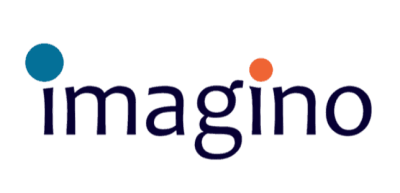Here's How HelloFresh Is Using Data to Better Serve Customers

From its current position as the only global direct-to-consumer, subscription-based meal-kit company, HelloFresh is focusing on data and analytics to innovate its order fulfilment and shipping processes – and to better serve its customers.
The HelloFresh Freshness Challenge
The HelloFresh business model centres around selling and delivering pre-packaged meal boxes, each containing the exact ingredients required for a particular meal, including fresh produce, meat, dairy, and measured seasonings.
Because of the perishable nature of the fresh food in its meal kits, HelloFresh faces a daily supply chain challenge in avoiding food waste, while guaranteeing that all of its customers receive meal kits with fresh ingredients. This problem is exacerbated by the demanding nature of the consumers, who expect to receive exactly what they want, with ingredients of the highest quality, delivered in a timely manner.
Matching Supply with Customer Demand
In a typical month, HelloFresh packages over 10 million meals, for more than one and a half million customers worldwide. The brand’s direct-to-consumer approach allows for the streamlining of the traditional food supply chain, with fewer stages and a path that pulls products directly from growers, into the warehouse, then out to the customer.
This modified supply chain routinely pushes orders out to customers within three days of their purchase. But to limit each order to just the right amount of product, the supply needs to exactly match the demand. For HelloFresh, the key to achieving this lies within the brand’s own subscription commerce model.

In any subscription-based business, customer retention is vital, as rapid customer turnover can quickly eat into profits, along with the high costs of attracting and acquiring new consumers. With HelloFresh, keeping those customers happy requires an understanding of their preferences, including what recipes, ingredients, and meals each household favours.
For HelloFresh, using data as the backbone of the subscription model simultaneously fuels its optimised product selection offerings, powers its proprietary forecasting algorithms, and improves supply-demand visibility and supply chain logistics.
Enhanced Analysis of Data Gathered from Customers
With a globally dispersed consumer base running into the millions, HelloFresh has access to huge volumes of data, which it can use to optimise product selections and streamline its own operations. This data harnessing has practical applications at a number of levels.
The company’s subscription model allows HelloFresh to calculate when customers might favour certain types of food over others, when customers want to receive their orders, and when they might take a pause from using the service. From these results, HelloFresh can offer optimised product selections to consumers, limiting the amount of product needed to meet customer requirements without generating waste.
According to Adam Kalikow, Senior Director of Operations at HelloFresh, “Because of the business model and the data we collect from our customers, we’re able to demand forecast a lot more effectively than a typical retail or e-commerce store selling food. Over time, we’ve been able to build up a ton of data… and develop internal proprietary algorithms that we can apply to improve that forecasting.”

Insights gleaned from customer data may be used at various levels of scale. For instance, online searches at Christmas time for recipes involving turkey or ham may provide information allowing HelloFresh to flexibly adjust general offers and promotions.
At an individual level, if particular customers habitually eat fish on a Friday, this insight enables HelloFresh to target tailored seafood offers in the latter part of the week. And on a more global scale, analysis of food trends across the country can inform the marketing of special offers nationwide.
The geographical diversity of HelloFresh customers also yields information and insights on culinary trends, preferred taste sensations, and regional variants on traditional recipes. This data allows HelloFresh chefs to create new flavour profiles or food pairings - unconventional combinations of tastes and ingredients that give fresh meal-planning ideas to HelloFresh customers.
Information gathering occurs as a two-way process. HelloFresh uses customer feedback to shape inventory demand, and to drive growth and innovation. The company aggregates data from a variety of internal sources, including customer surveys, orders, customer care interactions, and browsing activity at its e-commerce site.
In combination, these insights have yielded massive results for the organisation, including increased profit margins, improved order volume forecasts, and better customer retention.
Cultivating a Data Culture at HelloFresh
Simply having access to customer and supply chain data isn’t enough. HelloFresh needs to have skills in place to make sense of all this valuable information, and to put the insights gleaned from its analysis into action.
As Adam Kalikow puts it: “We all need to obsess about how to continue pulling high-quality talent into this industry, into supply chain, to be able to leverage this wealth of data.”
To this end, HelloFresh works to cultivate a "data culture" throughout its organisation, with the help of high-level talent capable of translating analytics and insight into a better experience for the customers.
Data and analytics are set to be hot topics at eTail Connect 2020, taking place in February at Twickenham Stadium, London. Download the Agenda today for more information and insights.













